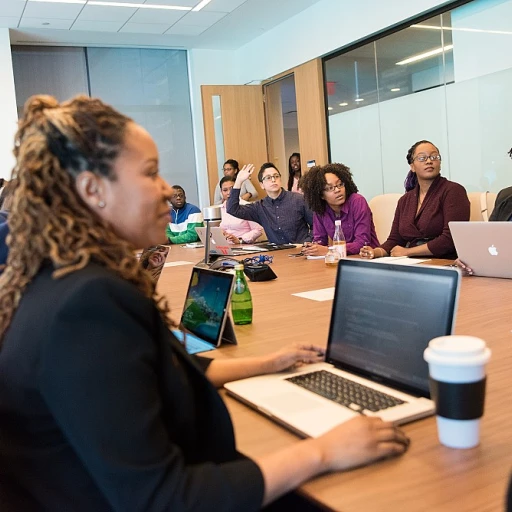
Understanding the Hogan leadership assessment
What Makes the Hogan Leadership Assessment Stand Out
Understanding the Hogan leadership assessment starts with recognizing its unique approach to evaluating leadership potential. Unlike many traditional personality assessments, Hogan assessments are rooted in decades of research on personality traits, values, and behaviors that predict workplace performance. The Hogan assessment suite is designed to help organizations identify effective leaders by measuring both strengths and potential derailers that can impact success.
Hogan assessments focus on three core areas: day-to-day personality (how a leader typically behaves), potential challenges under stress, and the values that drive decision making. This comprehensive approach provides a nuanced view of leadership potential, helping chief human resources officers (CHROs) make informed decisions about leadership development and succession planning. The leadership forecast series, for example, offers detailed reports that highlight key competencies, emotional intelligence, and areas for growth.
What sets Hogan apart is its predictive validity. The assessments are not just about labeling personality traits—they are about forecasting leadership performance and cultural fit. This is crucial for organizations aiming to build strong, adaptable leadership teams. Hogan data is often used to support leadership development programs, guide feedback conversations, and inform talent strategies.
For those interested in learning more about how personality assessments like Hogan can shape effective leadership, exploring the uniqueness in human resources leadership offers valuable insights into the broader context of leadership assessment and development.
As we move forward, it becomes clear why CHROs increasingly rely on leadership assessments to identify and nurture high-potential leaders, ensuring that organizations are prepared for future challenges.
Why chief human resources officers rely on leadership assessments
Why Leadership Assessments Matter for HR Leaders
Chief human resources officers (CHROs) face the ongoing challenge of identifying and nurturing effective leadership within their organizations. Leadership assessments, such as the Hogan leadership assessment, have become essential tools for this purpose. These assessments provide objective data on personality traits, values, and leadership potential, helping HR leaders make informed decisions about talent development and succession planning.Supporting Strategic Decision Making
With the growing complexity of organizational structures, CHROs need reliable insights to forecast leadership success and address gaps in their leadership pipeline. Hogan assessments offer detailed reports that highlight strengths, development needs, and potential derailers. This information is crucial for designing targeted leadership development programs and aligning talent strategies with business goals.- Personality assessments like Hogan help uncover hidden traits that influence performance and decision making.
- Leadership forecast series from Hogan provide actionable feedback for both current and future leaders.
- Hogan certified professionals can interpret assessment data to maximize leadership effectiveness and drive organizational growth.
Enhancing Leadership Development Initiatives
By leveraging Hogan data, CHROs can tailor development initiatives to individual and team needs. The assessment's focus on emotional intelligence, values, and behavioral tendencies enables HR leaders to foster a culture of continuous learning and improvement. This approach not only supports leadership development but also strengthens overall organizational performance. For those interested in frameworks that support learning and growth in HR leadership, exploring the Dreyfus learning model in HR leadership can provide additional insights.Building a Foundation for Effective Leadership
Ultimately, CHROs rely on leadership assessments like Hogan to ensure that their organizations are led by individuals with the right mix of skills, values, and personality traits. These tools help identify high-potential leaders, guide succession planning, and support the ongoing development of effective leadership at every level.Key competencies measured by the Hogan leadership assessment
What Hogan Measures: Core Leadership Traits and Competencies
Hogan assessments are widely recognized for their ability to provide a comprehensive view of a leader’s personality, values, and potential. These tools go beyond surface-level observations, diving into the underlying traits that drive effective leadership and long-term performance. For chief human resources officers, understanding these competencies is essential for making informed decisions about leadership development and succession planning.
- Personality and Behavioral Traits: Hogan personality assessments, such as the Hogan Personality Inventory, evaluate how individuals typically behave in the workplace. This includes factors like sociability, ambition, and prudence, all of which influence leadership style and team dynamics.
- Values and Motivators: The Hogan Motives, Values, Preferences Inventory helps uncover what drives leaders at their core. Understanding these values is crucial for aligning leadership with organizational culture and ensuring a strong fit.
- Potential Derailers: The Hogan Development Survey identifies potential risk factors that could undermine a leader’s effectiveness under stress or pressure. Recognizing these derailers early allows for targeted development and coaching interventions.
- Emotional Intelligence: While not always labeled as such, Hogan’s assessments provide insights into self-awareness, interpersonal sensitivity, and the ability to manage relationships—key components of emotional intelligence and effective leadership.
- Decision Making and Strategic Thinking: Hogan data can reveal how leaders approach problem-solving and decision making, which is vital for roles requiring complex judgment and foresight.
Each Hogan assessment report offers actionable feedback, highlighting both strengths and areas for development. This information helps HR leaders tailor leadership development programs and identify high-potential talent. The role of a business strategist in HR is increasingly tied to leveraging such data for organizational success.
By focusing on these key competencies, chief human resources officers can use Hogan leadership assessments to build more effective, resilient, and adaptable leadership teams. The insights gained from these personality assessments support better hiring, promotion, and development decisions, ultimately driving organizational performance and success.
Integrating Hogan results into leadership development programs
Turning Hogan Data into Actionable Leadership Development
Integrating Hogan assessments into leadership development programs is a strategic move for chief human resources officers. The real value of Hogan leadership assessments lies in translating the detailed personality data and leadership forecast series into practical, growth-oriented actions for leaders. The Hogan assessment report provides a comprehensive view of an individual’s strengths, potential derailers, values, and decision-making tendencies. When used effectively, this data helps HR leaders design tailored development plans that address both current performance and future leadership potential.- Personalized Development: By leveraging insights from the Hogan personality assessment, HR can create individualized learning paths. These paths focus on enhancing emotional intelligence, addressing blind spots, and building on existing strengths.
- Feedback-Driven Growth: Hogan assessments offer structured feedback, which is essential for leaders to understand how their traits impact team dynamics and organizational culture. This feedback helps leaders learn and adapt, fostering more effective leadership behaviors.
- Alignment with Organizational Goals: Integrating Hogan data ensures that leadership development aligns with the company’s values and success criteria. This alignment supports a consistent leadership culture and drives performance across the organization.
- Continuous Monitoring: The development survey and ongoing assessments Hogan provides allow HR to track progress and adjust development strategies as leaders grow and organizational needs evolve.
Addressing organizational culture and fit with Hogan insights
Aligning Leadership Values with Organizational Culture
Understanding how leaders fit within the broader organizational culture is crucial for chief human resources officers. Hogan assessments provide deep insights into personality traits, values, and decision-making styles, helping to identify whether a leader’s approach aligns with the company’s core values and mission. This alignment is essential for effective leadership and long-term success.Using Hogan Data to Enhance Cultural Fit
Hogan’s leadership forecast series and personality assessments offer detailed reports on individual strengths, potential derailers, and emotional intelligence. These insights help HR leaders:- Pinpoint traits that support or challenge the existing culture
- Identify gaps between leadership styles and organizational expectations
- Guide development programs to reinforce desired behaviors
Supporting Effective Integration and Performance
Integrating Hogan assessment results into onboarding and ongoing development helps leaders understand how their personality and values impact team dynamics and performance. Regular feedback based on assessment findings encourages continuous learning and adaptation, which is vital for maintaining a healthy organizational culture.Promoting Success through Certification and Best Practices
Becoming Hogan certified ensures HR professionals interpret assessment results accurately and ethically. This expertise supports the effective use of Hogan assessments in decision making, leadership development, and succession planning. It also helps avoid common pitfalls, such as over-reliance on a single report or misinterpreting personality data. In summary, using Hogan assessments to address organizational culture and fit empowers chief human resources officers to build strong, values-driven leadership teams. This approach not only enhances individual performance but also drives overall organizational success.Common pitfalls and best practices when using the Hogan leadership assessment
Common mistakes in interpreting Hogan data
One of the most frequent pitfalls when using Hogan assessments is misinterpreting the data. The Hogan leadership assessment provides a wealth of information about personality traits, values, and leadership potential. However, without proper certification or training, it is easy to focus on surface-level scores and overlook the nuanced insights that drive effective leadership development. Relying solely on the report without considering the broader context of a leader’s role or the organization’s culture can lead to misguided decisions about talent and succession planning.
Overlooking the importance of feedback and follow-up
Another challenge is neglecting the feedback process. Hogan assessments are most effective when leaders receive clear, actionable feedback and support for development. Skipping this step or providing generic feedback reduces the impact of the assessment and can leave leaders feeling disengaged. To help leaders learn and grow, it is essential to integrate feedback sessions and ongoing development plans based on Hogan data.
Failing to align with organizational goals
Leadership assessments like Hogan are powerful tools, but they must be aligned with the organization’s strategic objectives. Sometimes, organizations use the assessment in isolation, without connecting the results to broader leadership development or performance management initiatives. This disconnect can limit the effectiveness of the assessment and hinder progress toward organizational success.
Best practices for maximizing Hogan assessment value
- Get Hogan certified: Ensure that those interpreting the results have completed Hogan certification to accurately understand and communicate the findings.
- Integrate with leadership development: Use Hogan insights to inform leadership development programs, focusing on both strengths and areas for growth.
- Encourage self-awareness: Help leaders reflect on their personality traits, values, and emotional intelligence to drive effective leadership behaviors.
- Use the full range of Hogan tools: Combine the leadership forecast series, development survey, and other assessments to gain a comprehensive view of leadership potential and performance.
- Monitor progress: Regularly review development plans and adjust based on ongoing feedback and assessment results.
By avoiding common pitfalls and following best practices, chief human resources officers can leverage Hogan assessments to make informed decisions, support leadership success, and foster a culture of continuous development.












